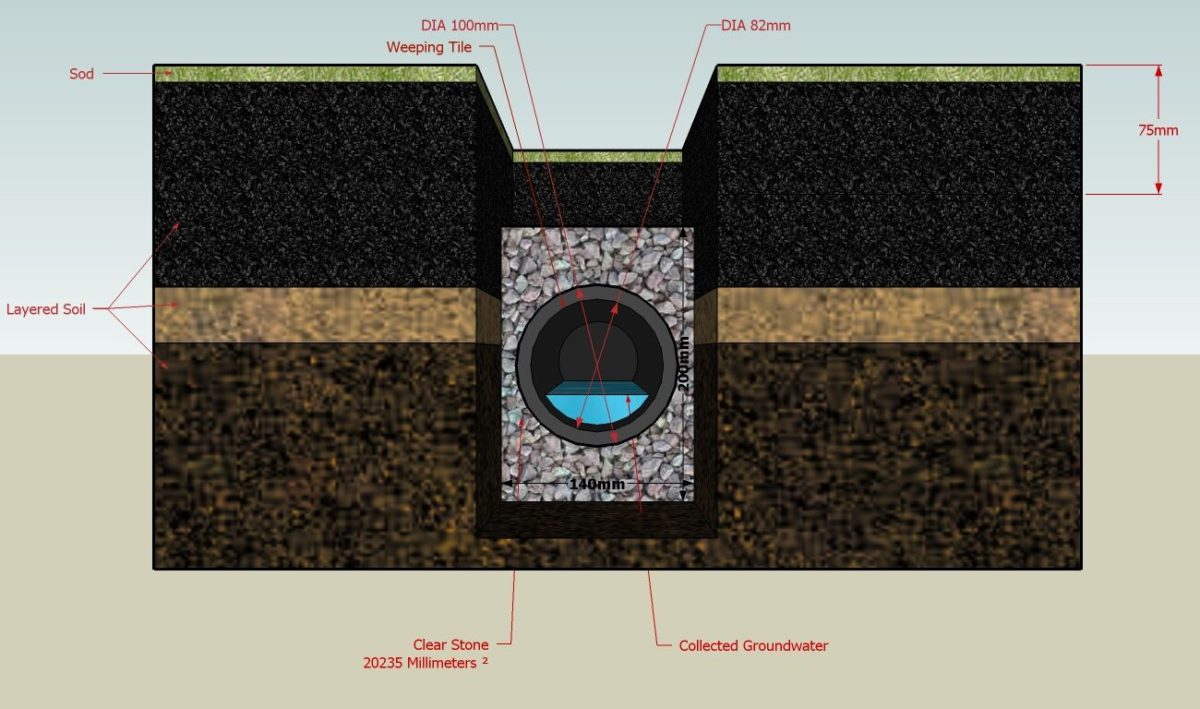The Value of a French Drain Installation is in the Details!

French drain installation in Dallas Fort Worth. Lee Engineering – Since 1971
Installing a French drain may seem like a simple task, but there is a science behind proper installation and design. Material composition is very important to the long-term performance of any French drain.
- Drainage Pipe Material: When installing French drains, the material of the drainage pipe is very important. We often see French drains installed by landscaping companies that have been designed with flexible plastic piping with holes, instead of a solid drain pipe. French drains installed using this method are extremely vulnerable to damage and tend to clog. Often, these drainage systems are useless after a short period of time.
- Drainage System Filtering: The gravel and perforated PVC pipe within a French drainage system should be surrounded by filter fabric to prevent sediment build-up within the gravel and pipe. This is a feature that is often ignored during many installations.
- Drainage System Design and Implementation: French drains rely on gravity to transfer water from point A to point B. Drainage systems that are not designed AND installed with the slope in consideration will fail to transport water to the desired discharge site. Minimum slope of French drain lines should be 1% or greater.
- Deep French Drain: Consult a licensed engineer as mentioned above.
